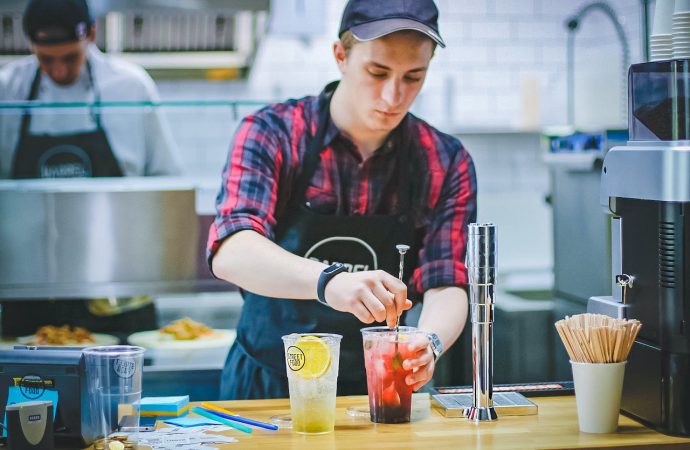Food and drink have always been a natural pairing, but in recent years, the trend of combining the two has taken on a new level of sophistication. From coffee cocktails to tea-infused desserts, food and drink are coming together in exciting and unexpected ways. In this article, we will explore the culture of food drinks
Food and drink have always been a natural pairing, but in recent years, the trend of combining the two has taken on a new level of sophistication. From coffee cocktails to tea-infused desserts, food and drink are coming together in exciting and unexpected ways. In this article, we will explore the culture of food drinks and the ways in which it is evolving.
One of the key elements of food drinks culture is the emphasis on flavor. Chefs and mixologists are constantly experimenting with new ingredients and techniques to create unique and exciting flavor combinations.
For example, some mixologists are using savory ingredients like bacon and herbs to add depth and complexity to their cocktails. Others are using unexpected ingredients like avocado and beet juice to create colorful and flavorful drinks.
Similarly, chefs are using unexpected ingredients like tea and coffee to add depth and complexity to their dishes. For example, tea can be used to flavor sauces and marinades, while coffee can be used to add richness and depth to chocolate desserts.
Another important element of food drinks culture is the emphasis on presentation. A well-crafted food drink should not only taste good, but it should also look good.
For example, some mixologists are using edible flowers and herbs to garnish their cocktails, while some chefs are using colorful fruits and vegetables to add visual interest to their dishes.
In addition, the vessel in which a food drink is served can also have an impact on its presentation. For example, a cocktail served in a unique glass or a dessert served in a creative vessel can add an element of surprise and delight to the dining experience.
One of the most exciting developments in the world of food drinks is the use of fermentation. Fermentation is a process in which microorganisms like bacteria and yeast are used to break down the sugars in food and drink, creating new flavors and textures.
For example, kombucha, a fermented tea drink, is known for its tangy, slightly sweet flavor and its health benefits. Similarly, kefir, a fermented milk drink, is known for its tangy flavor and its probiotic properties.
Chefs and mixologists are also experimenting with fermentation in their dishes and drinks. For example, some chefs are using fermented fruits and vegetables to add depth and complexity to their dishes, while some mixologists are using fermented ingredients like shrubs and vinegars to add tangy, complex flavors to their cocktails.
In addition to flavor and presentation, another important element of food drinks culture is the emphasis on sustainability. Many chefs and mixologists are using locally sourced and seasonal ingredients to reduce their carbon footprint and support local farmers.
For example, some mixologists are using locally sourced herbs and fruits to create unique and flavorful cocktails, while some chefs are using seasonal vegetables and fruits to create vibrant and colorful dishes.
In addition, some chefs and mixologists are using food waste to create new and innovative dishes and drinks. For example, coffee grounds can be used to flavor dishes and drinks, reducing the amount of waste produced by coffee shops and households. And tea leaves can be used to flavor broths and soups, adding flavor and nutrition to dishes.
One of the most exciting aspects of food drinks culture is the way in which it is constantly evolving. Chefs and mixologists are always looking for new and innovative ways to combine the flavors of food and drink, and to push the boundaries of what is possible.
For example, some mixologists are using molecular gastronomy techniques to create unique and unexpected flavors and textures in their cocktails. Others are using technology like sous vide cooking to create perfectly cooked and flavored dishes.
Similarly, some chefs are using social media to connect with their customers and to share their creations with a wider audience. They are using platforms like Instagram and TikTok to showcase their dishes and drinks, and to inspire others to experiment with food and drink at home.
In conclusion, food drinks culture is a vibrant and exciting trend in the culinary world, offering new and innovative ways to combine the flavors of food and drink. From flavor and presentation to sustainability and innovation, chefs and mixologists are pushing the boundaries of what is possible, and creating new and exciting experiences for diners and drinkers alike. So next time you’re looking for a new flavor adventure, consider exploring the world of food drinks and the ways in which it is evolving.

















Leave a Comment
Your email address will not be published. Required fields are marked with *